Thank you for downloading this AMACOM eBook.
Sign up for our newsletter, AMACOM BookAlert , and receive special offers, access to free samples, and info on the latest new releases from AMACOM, the book publishing division of American Management Association.
To sign up, visit our website: www.amacombooks.org
To learn more about the American Management Association visit: www.amanet.org

The copyright information for this title may be found at the end of this eBook file.
MASTERING
IMPORT &
EXPORT
MANAGEMENT
 3RD EDITION
3RD EDITION 
MASTERING
IMPORT &
EXPORT
MANAGEMENT
 3RD EDITION
3RD EDITION 
THOMAS A. COOK
with KELLY RAIA
 C-TPAT and Global Security Management
C-TPAT and Global Security Management
 Inbound and Outbound Logistics
Inbound and Outbound Logistics
 Documents, Operations, and Procedures
Documents, Operations, and Procedures
 Risk Assessment and Mitigation
Risk Assessment and Mitigation
 Best Practices in Import and Export Management
Best Practices in Import and Export Management
 Trade Compliance Guidelines
Trade Compliance Guidelines
 Global Supply Chain Management Tools
Global Supply Chain Management Tools

Dedicated to Jill Carney, who was dedicated to her family and the lives of many veterans improving their existence and ability to navigate the challenges of coming back to the United States from the ravages and complications of having experienced war and terrorism on foreign shores.
You are missed, loved, and never forgotten!
Contents
Foreword
Thomas continually impresses me. He has become a leader in the field of global supply chain management. His ability to articulate the issues and offer hands-on solutions to corporate America is outstanding.
Tom has a significant capability to deliver the message and motivate each one of us to execute our import and export responsibilities to an impressive level of near perfection.
This book is just one of a series of written communications that teaches us all the skill sets we need to manage our business responsibilities and provides an intriguing insight into post 9/11 security and compliance management concerns.
This third edition of Mastering Import & Export Management fills an important void in the information and skill set development required to succeed in the field of global supply chain management. Neither prior to nor since September 11, 2001 has a book covered all the old and new supply chain import/export management issues and offered an array of cost-effective options in bringing competitive advantage and reducing global risks.
I am the New York District Export Councils chairman chairman emeritus and founder of the National Institute for World Trade (niwt.org) and have served in various capacities in global trade for more than thirty years. Tom has impressed me with his knowledge of all the current issues in importing and exporting and delivers a comprehensive and articulate message in this book.
In this third edition, Tom has raised the bar of expansive information flow, skill set development, and grand solutions to how goods and services move in the global supply chain in 2017 and beyond.
I can speak firsthand as a client, colleague, and friend of Tomsthis is a must-read book and a key addition to every supply chain managers library.
Spencer Ross
Chairman Emeritus
National Institute for World Trade
New York, New York
Preface
Global Supply Chain Management is a growing and highly complicated aspect of all corporations that operate in the international arena. Information flow, skill set development, and expansive resource development are all critical elements of successful import and export operations, which are highlighted in the third edition of this book.
Mastering Import & Export Management is a timely publication as companies scramble to maintain open import and export supply chains with an ever-increasing level of government scrutiny and compliance and security changes.
Corporate America is redeploying its personnel, resources, and infrastructure to manage supply chains that have greater foreign purchases and expanding global markets.
Executives engaged in importing and exporting are being tested daily with challenges requiring new and enhanced skill sets. These new challenges include cost-effective logistics; better inventory management; more skilled vendor services; compliance and security management; and a changing political, economic, and regulatory climate in a global environment.
Additionally, there is pressure from stockholders and senior management to continually reduce risk and spend in their global supply chain.
Corporations are recognizing that to be competitive in world trade, a company must reduce its cost of logistics. This book provides information on how to lower costs in shipping, inventory management, import/export order processing, and manpower and how to avoid fines and penalties.
This book outlines all of the historical legacy issues of world trade and interfaces the new world order, post 9/11.
Todays supply chain managers must confront the movement of goods and services in a manner that is timely, safe, and cost effective. But that alone is not enough. They must incorporate import/export supply chain strategies that include post-9/11 compliance and security regulations that are both new and evolving. This means that corporate America must initiate a vigil to keep current and be flexible enough to implement revisions.
The bankruptcy on August 31, 2016 of the major ocean carrier Hanjin sent huge negative ripples through all of the supply chains of the world, the impact of which will be noticed for many years.
Managing this event to minimize unfavorable consequences is covered in this edition. The business world has become excited about the initial initiatives put forth by the Trump Administration extolling a strong leadership in moving the economy of the USA forward, which will always benefit all countries engaged in global trade.
A key trait of successful global supply chains will be the ability to modify and change import/export logistics, communications, suppliers, vendors, and all interface parties.
The book makes an excellent argument that developing resources, managing change, and affecting short-term supply chain strategies is an integral foundation for importers and exporters.
While some concepts and methodologies of the past have validity, the truly successful and competitive company engaged in imports and exports will in tandem bring a whole new skill set to the deal that will have safe, secure, and compliant supply lines in its global makeup.
Next page

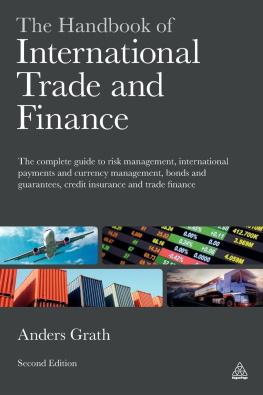
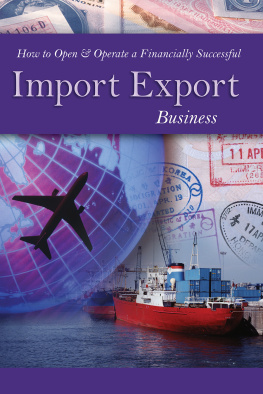
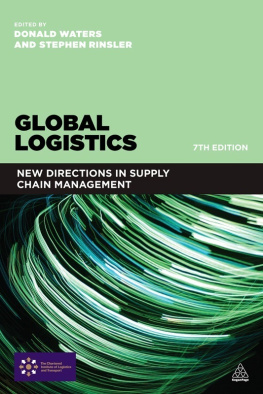
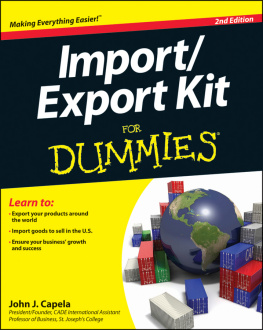
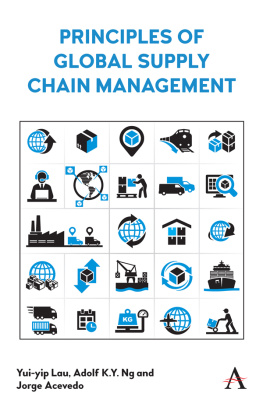

 3RD EDITION
3RD EDITION  C-TPAT and Global Security Management
C-TPAT and Global Security Management